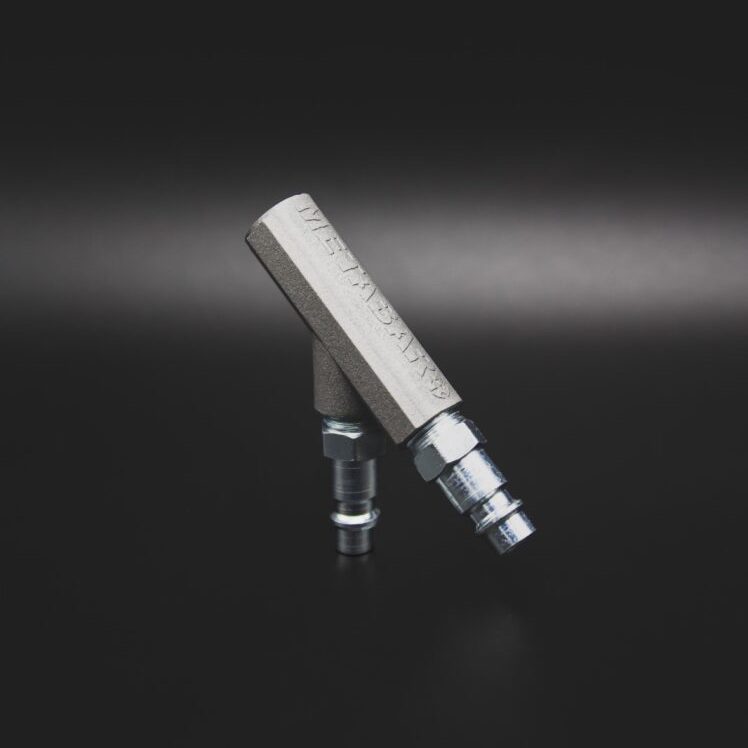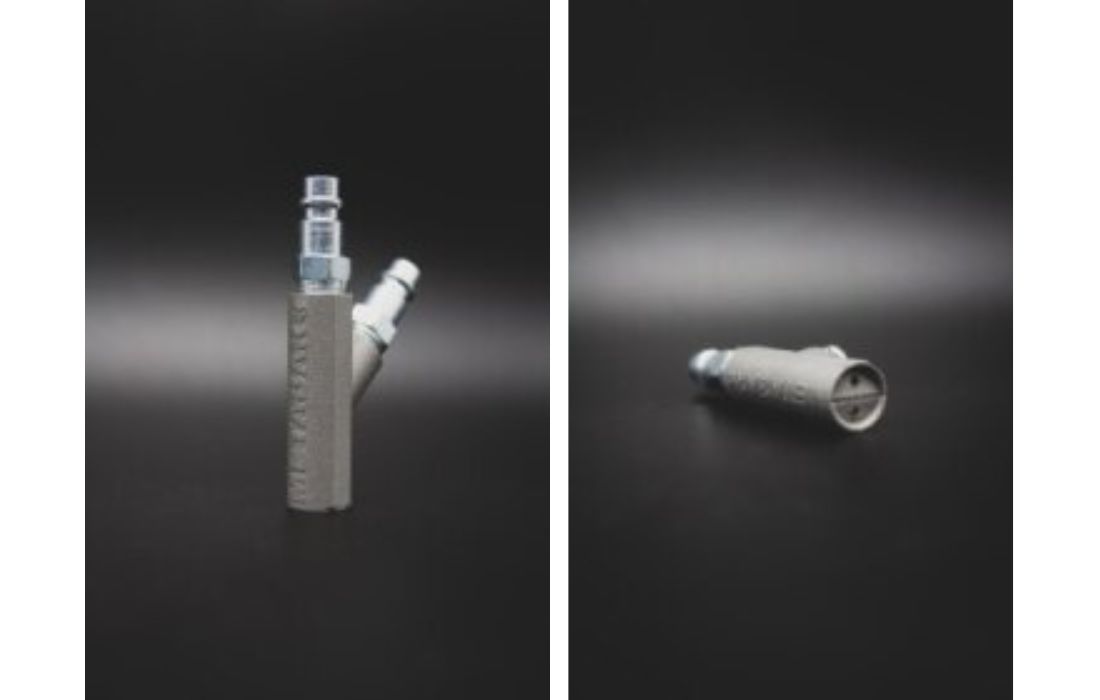Metabar® Technology Oy develops future technology services that help improve production efficiency in various industries. Metabar’s innovative technology is based on a patented, intelligent compressed air and fluid control system, in which intelligently designed, 3D-printed metal nozzles play a key role.
Five years of collaboration in metal 3D printing
When Jarmo Lehtonen, founder, innovator, and CEO of Metabar® Technology Oy, set out to create his company’s core service, a new kind of cleantech solution, it was clear to him from the start that the nozzles required by the technology could only be manufactured using 3D printing.
“I started by making experimental nozzles by 3D printing plastic. The first nozzle concept had 18 parts and the channel solutions within it were complex. I then went on to scale down this version to the actual size. I realised that you can’t make such small wall thicknesses with plastic, but the nozzle has to be made of metal. We did our first metal printing experiments in 2016, and they immediately led us in the right direction,” says Lehtonen of the early stages of development.
Lehtonen crossed paths with 3D Formtech a couple of years later when he met 3D Formtech’s CEO Toni Järvitalo at a trade fair.
“With 3D Formtech, the nozzles were printed correctly on the first try. The right attitude and quality are important in cooperation because success can depend on a small thing,” says Lehtonen.
“3D Formtech has been a constant partner of Metabar since 2019. If I use other partners nowadays, it’s mainly for testing or to get additional capacity,” Lehtonen continues.
High-quality nozzles 3D printed in steel and titanium
During this collaboration, Metabar® Technology has developed and implemented several nozzle designs with 3D Formtech. The main material has been acid-resistant steel 316L. The nozzles that have been printed have been prototypes, various experiments, and finished products for the industry – for example, disinfection, anti-dust, and watering nozzles designed for different purposes in the food industry.
“We are not a vendor of nozzle components, but we operate on a fully digital platform, providing the customer with a full service and hardware solution, including design and if required, the operating system. This enables us to serve our customers as far away as Australia. We provide 3D data of the solution and they can print the nozzles and have the equipment manufactured by a local manufacturer,” Lehtonen explains.
“We have moved to titanium as our main printing material. It is ideal for our components and is fast to print. Material requirements also come from customers. In addition to its production suitability, titanium has the advantages of excellent durability and tolerance,” says Lehtonen.
Compared to other components designed for similar applications, Metabar’s 3D-printed nozzles compete in their league. The difference between traditional cast or machined nozzles is clear.
“3D printing allows us to effectively use our technology as a key component of every solution we offer. The gas provides a very high velocity for a liquid with a very small droplet size. At its best, this measure achieves 95% savings for liquids and, in the case of new energy solutions, other significant overall savings. The nozzles can be used with any liquid with a viscosity similar to water – fuels, light oils, or chemicals. Gases can also be of any type,” explains Lehtonen.


Confidence in quality and succeeding together
From the very beginning, the collaboration between Metabar and 3D Formtech has been driven by a common desire to make things happen. Lehtonen considers this to be the main reason why the partnership has continued for years.
“The best thing is the synergy between our companies. I have full confidence in what they are doing: 3D Formtech has a good attitude to working together, they know us and demonstrate their desire to do the best possible job. The high quality of the printed component is crucial. Especially when it comes to a strategic small component, a mistake can cause high costs.”
“Through doing things, we have found the best ways of working and people with whom things go really well – for example, 3D Formtech’s sales manager Ville Niemelä, who has helped us find the best solutions for our needs. We’ve got the production up and running and the printed nozzles go directly from 3D Formtech to our contract manufacturer. There has been no point in us buying our own printers, and thanks to the smooth processes, we also save on delivery costs.”
Lehtonen sees a growing interest in 3D printing. He encourages companies to turn directly to 3D printing houses such as 3D Formtech instead of consultants.
“For a company that is starting to experiment with 3D printing services for the first time, a 3D printing house is a cost-effective option. The printing professionals also have more expertise and up-to-date information on 3D printing and material options suitable for the application. 3D Formtech has helped us find solutions to many challenges.”